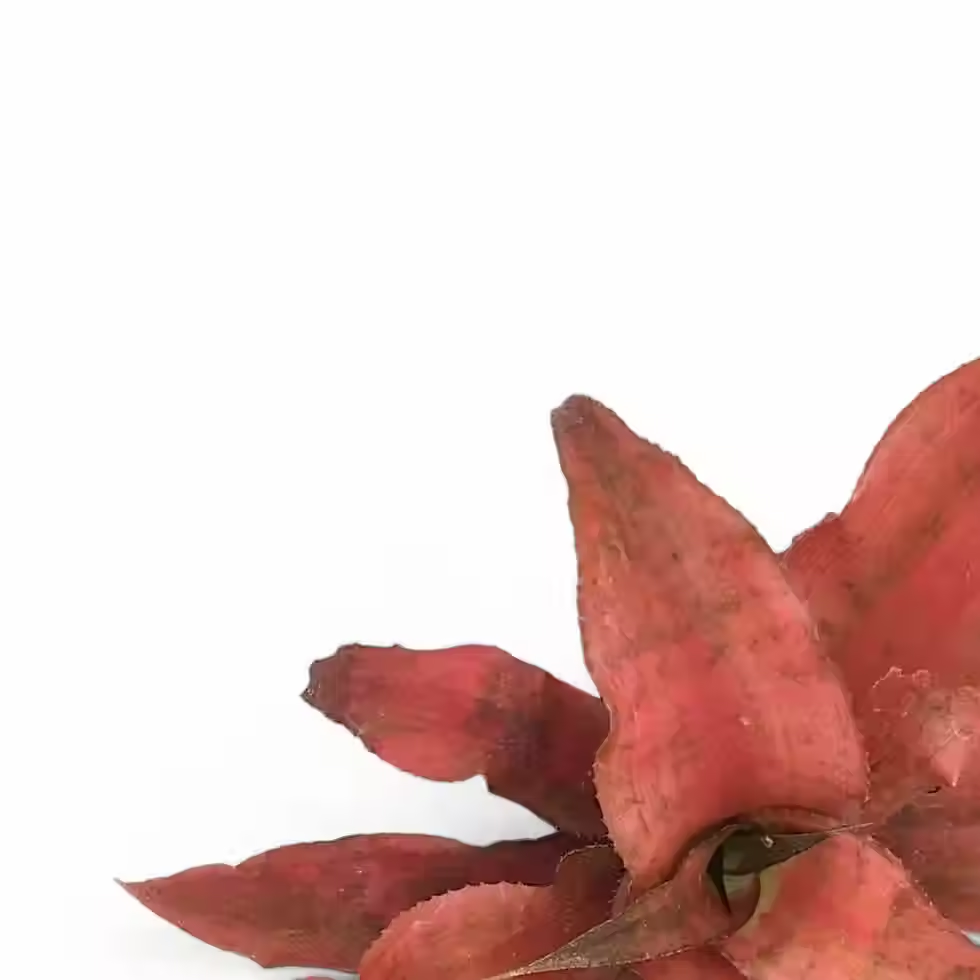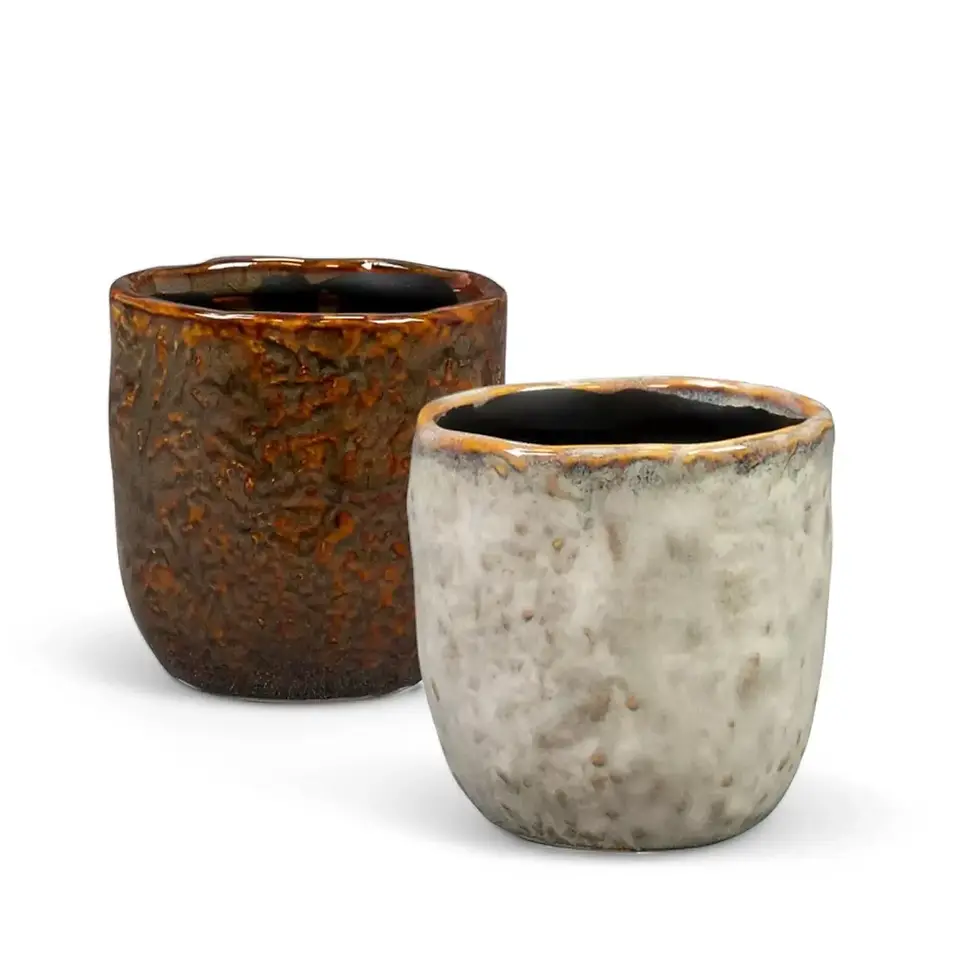Alocasia reginula 'Black Velvet' - Care Guide, Origin, and Styling Tips
Alocasia reginula 'Black Velvet' is the ultimate statement plant for any indoor jungle. Its deep, velvety leaves are almost black, creating a dramatic contrast with bold silver-white veins that look hand-painted. Each leaf has a thick, slightly succulent texture and a smooth matte finish, adding to its luxurious appeal. Compact and sculptural, the leaves grow elliptic to ovate with slightly curved edges, making it a perfect centerpiece for tropical collections, terrariums, or as a standalone feature in small spaces.
If you’re looking for a plant that combines exotic beauty, compact size, and low-maintenance care, this "little queen" is the one to bring home.
Where Does Alocasia 'Black Velvet' Come From?
- Native Habitat: Borneo's rainforests, where it thrives in humid, dappled light conditions.
- Introduction to Cultivation: Introduced to the market in 1992 by Scott Hyndman, who obtained it from the Lyon Arboretum in Hawaii.
- Propagation Success: A single plant was cultivated and propagated via tissue culture, making it widely available.
The name reginula means "little queen", perfectly describing its regal appearance. It belongs to the “jewel Alocasia” group, a family of compact, rare tropical plants prized for their ornamental foliage.
Complete Care Guide for Alocasia reginula 'Black Velvet'
→ Light Requirements
Bright, indirect light is ideal, mimicking dappled rainforest sunlight. Avoid direct sunlight, which can scorch the velvety leaves. Grow lights can supplement natural light if necessary.
→ Watering Needs
- Keep the soil consistently moist but never waterlogged.
- Allow the top 2-3 cm of soil to dry before watering.
- Use filtered or rainwater to prevent mineral buildup on leaves.
→ Humidity Levels
- Thrives in 60-70% humidity.
- Use a humidifier or place on a pebble tray with water.
- Group with other tropical plants to create a microclimate.
- Can be grown in a glass terrarium for a controlled environment.
→ Temperature
Keep temperatures between 18-27°C. Protect from cold drafts, air conditioning, or heaters, as temperatures below 7°C can stress the plant.
→ Soil and Repotting
- Use a well-draining mix: perlite, and orchid bark.
- Repot every 1-2 years or when roots start outgrowing the pot.
- Terracotta pots improve airflow, while plastic pots retain moisture better.
→ Fertilizing
Feed monthly in spring and summer with a balanced, diluted liquid fertilizer. Avoid fertilizing during winter dormancy.
→ Propagation
- Best propagated through division.
- Separate offsets during repotting.
- Replant offsets in fresh soil and keep humidity high.
→ Semi- and Hydroponics
Thrives in semi-hydroponic systems like LECA or full hydroponics. Maintain clean water and balanced nutrients.
→ Pruning Tips
Remove yellow or damaged leaves to encourage new growth. Always use clean scissors to avoid spreading pests or diseases.
Troubleshooting Common Issues with Alocasia reginula 'Black Velvet'
→ 1. Yellow Leaves
- Cause: Overwatering.
- Fix: Let soil dry slightly and ensure proper drainage.
→ 2. Brown Edges
- Cause: Low humidity or inconsistent watering.
- Fix: Increase humidity and water consistently.
→ 3. Drooping Leaves
- Cause: Water stress or sudden temperature changes.
- Fix: Check soil moisture and ensure stable conditions.
→ 4. Pests
- Spider Mites: Treat with neem oil and boost humidity.
- Mealybugs: Wipe with alcohol-soaked cotton and use insecticidal soap.
→ 5. Root Rot
- Cause: Waterlogged soil.
- Fix: Remove affected roots and repot in fresh, well-draining soil.
Why Alocasia 'Black Velvet' Is a Must-Have
- Compact Size: Ideal for terrariums, shelves, or desks.
- Striking Beauty: Its dark velvety leaves stand out in any collection.
- Low Maintenance: With the right setup, it's surprisingly easy to care for.
- Versatile Placement: Works as a focal point or paired with tropical companions like Calathea, Philodendron micans, or Boston Ferns.
FAQs about Alocasia reginula 'Black Velvet'
- Can I grow Alocasia 'Black Velvet' in a terrarium? Yes! Its size and love for humidity make it an excellent terrarium plant.
- Why are the Black Velvet leaves turning yellow? Overwatering is the most common cause. Let soil dry slightly and check drainage.
- How do I propagate Alocasia 'Black Velvet'? Best done through division. Separate offsets during repotting and plant them in fresh soil.
- Is Alocasia 'Black Velvet' toxic? Yes, it’s toxic to pets and humans if ingested, so keep it out of reach.
- How do I boost humidity for Alocasia reginula 'Black Velvet' ? Use a humidifier, pebble tray, or group it with other plants.
Ready to Add This Jewel to Your Collection?
Alocasia reginula 'Black Velvet' isn’t just a plant—it’s a statement. With its unique, velvety foliage and compact size, it’s perfect for both beginners and collectors.
🌿 Order your Alocasia 'Black Velvet' now and bring a little piece of the rainforest into your home!
Alocasia reginula 'Black velvet'
Alocasia reginula 'Black velvet' comes in following sizes:
Plug (Starter Plant) – ⌀ 2 cm , is approximately 10 cm tall
Baby Plant – is approximately 13 cm tall and comes in a ⌀ 6 cm pot
S – is approximately 20 cm tall and comes in a ⌀ 12 cm pot
M – is approximately 25 cm tall and comes in a ⌀ 13 cm pot
L – is approximately 30 cm tall and comes in a ⌀ 14 cm pot

























































